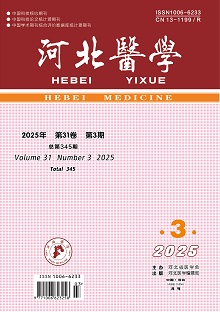|
|
|
| |
 |
| 《河北医学》杂志是经国家科学技术部和新闻出版署批准,由河北省卫生厅主管、河北省医学会主办的综合性医学科技期刊(月刊)大16开(A4)、96页,全年连续计页码。国内统一刊号CNl3—1199/R,国际标准刊号1SSNl006—6233。邮发代号18—24。1997年已入编《中国学术期刊》(光盘版),于1999年6月入编中国期刊网,主要报道全国各省市医疗、卫生、科研、管理的成果和进展以及新经验。以全国卫生技术人员为主要对象。本刊辟有论著,实验研究、经验交流、中医中药、预防保健、调查报告、临床护理、卫生及医院管理、专家讲座、文献综述、技术交流、病例报告等栏目。 |
|
|
| News |
 |
|
|
|
|
| |
| Current Issue |
Just Accepted |
Archive |
Most Read |
Most Download |
|
|
|